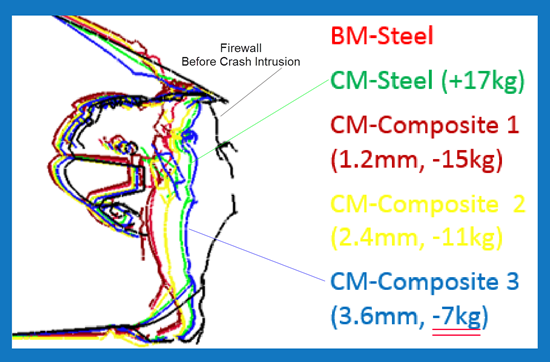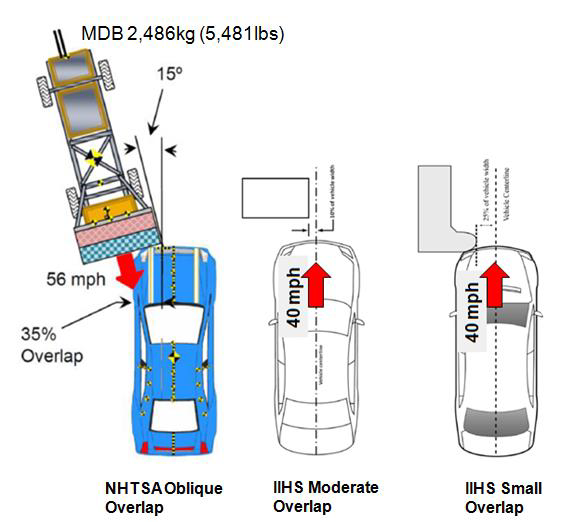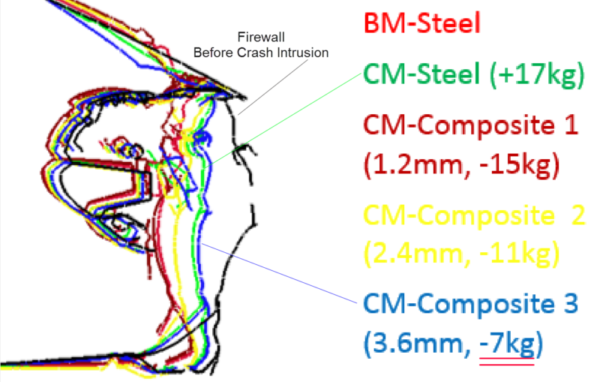Recent developments in the automotive industry will require that Original Equipment Manufacturers (OEMs) meet the new National Highway Transportation Safety Administration (NHTSA)’s requirements for vehicle safety. To meet these higher standards, OEMs are now required to strengthen the front end of almost all vehicles. The material of choice to get this job done? Studies are pointing to plastic.

To answer this question, researchers utilized a modeling process known as finite element analysis (FEA). It is worth noting that the results from FEA are reliable and have been regularly used by the automotive industry as they result in actionable scientific data.
FEA begins with researchers leveraging years of valuable information gathered by attaching data sensors inside a vehicle crumple zone. This information is then used to create a computerized model of a car to simulate real-world crashes and analyze how a given material, such as steel or plastic, performs during these crash simulations.
The output data shows the material characteristics and the way it would respond to a crash under a variety of different circumstances. This allows the chassis designer to provide restraint and other protective systems to lessen injuries to the vehicle’s occupants when such crashes occur.
When the vehicle is modeled correctly, various materials and vehicle dimensions can be tested to view how they would perform in real life without having to build and crash a new car each time. This saves time, money and vehicle destruction!
Using FEA, researchers have compared crash test results using both high-strength steel and polymer plastics to create structural changes in passenger vehicles. The results concluded that 35 pounds of high-strength steel were required to significantly reduce occupant compartment intrusion by at least 60% or more, and polymer composites achieved this same result with significantly less weight.
And not only were plastic composites able to achieve or exceed the results of high-strength steel, but their usage also lightweighted the baseline car weight by 15 pounds, meaning that the weight difference between using high-strength steel and polymer composites is 50 pounds! Lightweighting can result in increased fuel economy and enhanced performance (the engine can have less to push around). On top of that, the use of polymer plastic can also lead to lower carbon emissions. Looks like it’s a win-win-win situation for polymer composites, OEMs and consumers!

Polymer Composites Saving Lives AND Weight
A finite element (FE) model of a mid-size sedan was updated and validated using data from a 2015 Toyota Camry. The generated baseline model correlated well with oblique and co-linear crash configurations. An iterative process was used to develop structural countermeasures to reduce occupant compartment intrusion for the left and right oblique impact configuration. No unintended consequences, i.e. no considerable increase of vehicle pulse for oblique and co-linear load cases were observed. The associated added mass to reduce intrusion by at least 60% was +17 kg using high-strength steel materials. Read on to see how weight can be saved....
View the NHTSA/GMU Study Here
